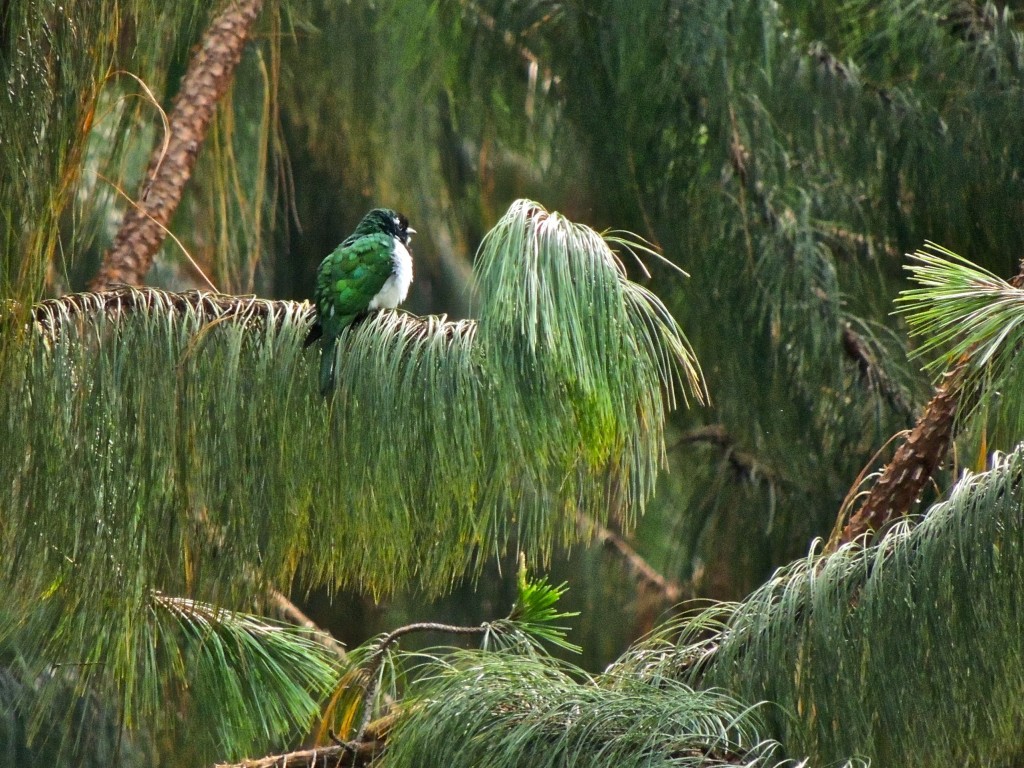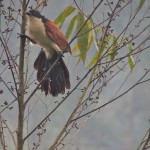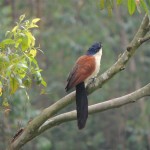February 2016. Rubugali. Kisoro District, Uganda. Wherever you find them cuckoos are curious birds. Growing up I knew only of the European Cuckoo and its reputation as a sure sign of spring (good) and an obligate nest parasite (bad). Moving to North America I learned about Black-billed Cuckoos and Yellow-billed Cuckoos, neither of which is a nest parasite but both are elegant, long-winged and rather secretive birds with funny clucking and gulping calls. Then a couple of years ago, in Mexico, I encountered some southern cuckoos and their relatives and they really made me sit up and pay attention; read about the Lesser Ground Cuckoo here and the Groove-billed Ani here.
Not surprisingly Africa has cuckoos of many shapes and sizes. My now well-worn field guide, Birds of East Africa, describes eighteen cuckoo species and six closely-related coucals; and that’s just east Africa. Around Rubugali I saw or heard four or five species: Klaas’s Cuckoo, African Emerald Cuckoo, Black and White Cuckoo, Levaillant’s Cuckoo and Blue-headed Coucal.
A Klaas’s Cuckoo or an African Emerald Cuckoo is a real prizes if you’re actually able to see one. They’re both quite vocal and my Ugandan birding companions were clever mimics, they could carry on a two-way exchange with the birds for long periods trying to draw them in. We know they came close, but the problem was that both species’ plumage is clear green, which works well for them but badly for us. At the end of my last day in the field we finally saw a Klaas’s Cuckoo, bright forest-green (what else?) above and snowy white below, a distinguished-looking bird.

Blue-headed Coucals, (locals make no discernable difference in pronunciation between cuckoo and coucal) are quite large, clumsy, chestnut and white birds. Clumsy may not the best choice of words but the first one I saw appeared rather awkward as it clambered around, but another, seen a couple of weeks later, was very quick to take flight and vanish. But vanished or not you often hear coucals calling. Local lore says that a calling coucal is a sure sign that it’s going to rain – which it does frequently anyway. Their call is a series of resonant, gulping ‘whooot’s; it starts with two assertive notes and is followed by a short, less certain series decreasing in volume. It’s a call that carries far in the deep hazy valleys and reinforces a sense of mystery to this little appreciated corner of Africa .
I caught little more than glimpses of a Black and White Cuckoo but a young Levaillant’s Cuckoo in a small bamboo clump stayed obligingly close to me. I had some but limited success photographing it under difficult light conditions.


